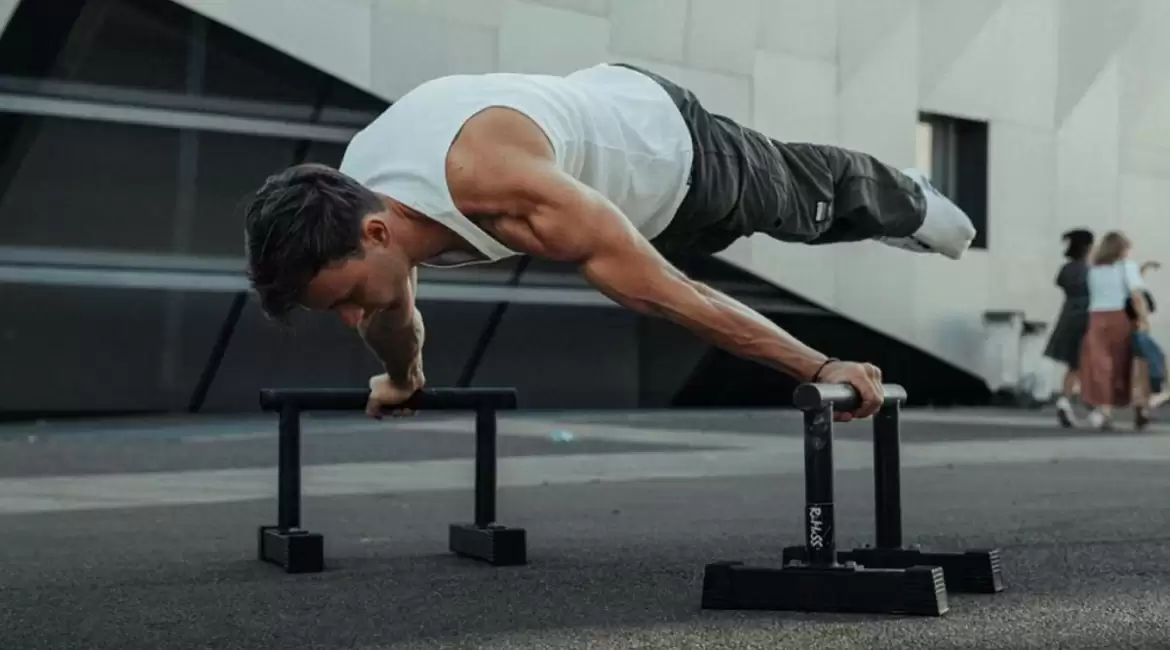Calisthenics, a form of resistance training using only your body weight, is not just about looking cool; it’s about building insane strength and tons of lean muscle mass. Whether you’re new to fitness or transitioning from other types of training, calisthenics offers a scalable, accessible way to enhance your physical abilities and achieve remarkable aesthetic results. This beginner’s guide will walk you through the foundational exercises, necessary progressions, and important tips to get you started on your calisthenics journey.
Introduction to Calisthenics
Calisthenics involves performing exercises that use your body weight for resistance, typically focusing on large muscle groups. This type of training can significantly enhance strength, flexibility, endurance, and coordination. Unlike traditional weight training, calisthenics does not require expensive equipment; a simple pull-up bar or even just floor space is sufficient to get started.
Getting Started with the Basics
Bent Arm Exercises
These exercises are crucial as they target your “push” muscles—such as your triceps, chest, and shoulders. Here are some beginner-friendly exercises you should try:
- Push-Ups: Start with traditional push-ups. If you find them too challenging, begin with wall push-ups, gradually working your way to more standard forms as you build strength.
- Dips: These are excellent for developing your chest and arms. If you don’t have access to dip bars, use a sturdy chair or a bench to perform bench dips.
Progression Tips:
- If push-ups are too easy, try variations such as diamond push-ups (closer grip) to target the triceps, or wide grip push-ups for the chest.
- Always ensure full range of motion: go all the way down in push-ups and dips, and extend your arms fully.
Pulling for Power
To develop your “pull” muscles like biceps, lats, and rear delts, incorporate these exercises:
- Pull-Ups and Chin-Ups: Begin with basic pull-ups or chin-ups. If these are too difficult, start with inverted rows, which are lighter and help build strength over time.
- Grip Variations:
- Close grip pull-ups or chin-ups focus on the biceps.
- Wide grip pull-ups enhance lat development.
Common Mistakes:
- Avoid partial movements; always pull until your chin is above the bar and extend your arms fully at the bottom.
Leg Work
Do not neglect your lower body. Simple exercises like squats and lunges can be done anywhere and effectively build leg strength and endurance.
Intermediate Goals
Once you can comfortably perform 5 sets of 20 reps of basic exercises like pull-ups, dips, and push-ups, it’s time to challenge yourself with more advanced movements.
Advanced Techniques:
- Muscle-Ups: This exercise combines a pull-up followed by a dip in one fluid motion and is a significant milestone in calisthenics.
- Handstands: Mastering a handstand not only boosts your shoulder strength but also improves balance and core stability.
- Warm-Up: Always warm up your wrists and shoulders thoroughly before attempting handstands.
- Practicing: Begin by using the kick-up method to enter the handstand, focusing on core engagement and a tight body line.
Training for Static Holds
Static holds like the planche or front lever require significant strength and skill:
- Scapular Strength: Essential for stability in these movements, work on scapular shrugs and leans to develop the necessary muscle control.
- Progressive Overload: Gradually increase the difficulty of the holds as your strength improves.
Mobility and Flexibility
Flexibility is crucial in achieving the full range of motion and preventing injuries:
- Perform dynamic stretches before workouts and static stretches afterward to maintain and enhance flexibility.
Equipment and Resources
While minimal equipment is needed, investing in a few basics like pull-up bars, resistance bands, and perhaps a mat can enhance your training experience. Additionally, consider educational resources such as eBooks or tutorial videos to deepen your understanding and technique.
Conclusion
Starting calisthenics is an exciting journey that empowers you to use your body weight to build strength and muscle. By focusing on proper form, gradually increasing difficulty, and staying consistent, you’ll not only see improvements in your physical appearance but also in your overall physical performance. Remember, the key to success in Calisthenics is persistence and gradual progression. Start today, and transform your fitness journey!


Leave a reply